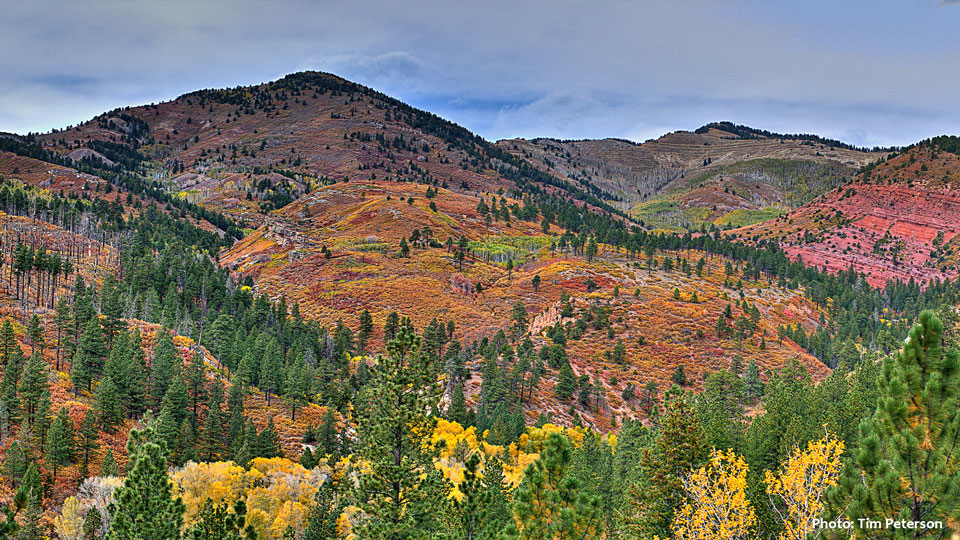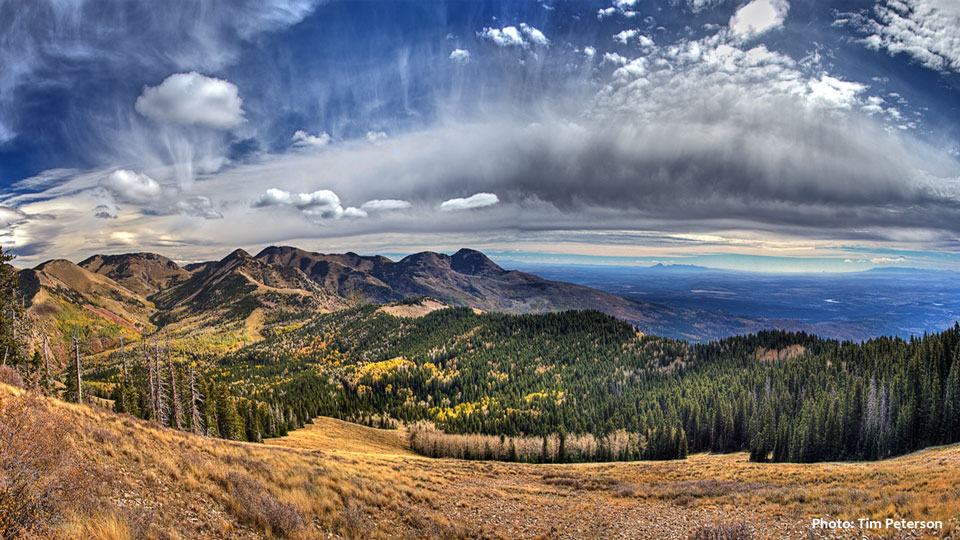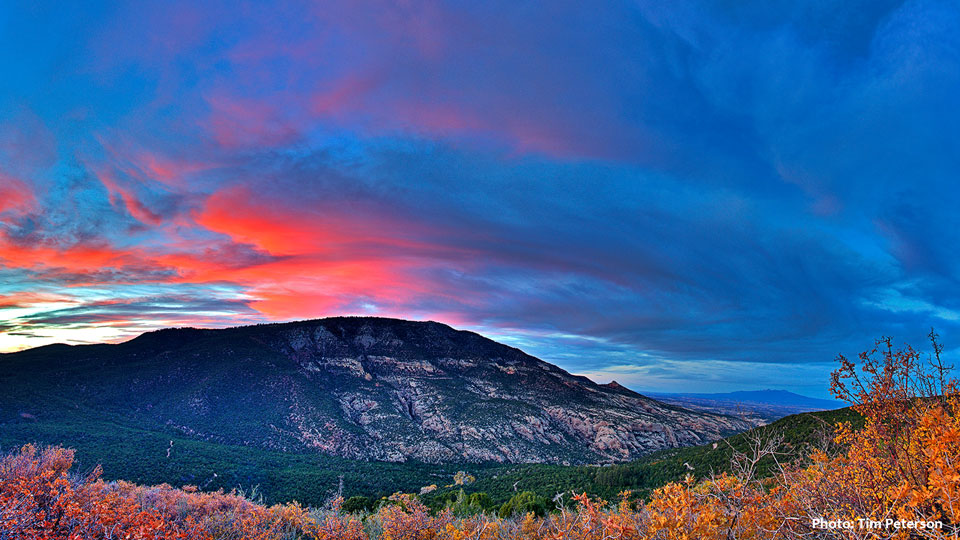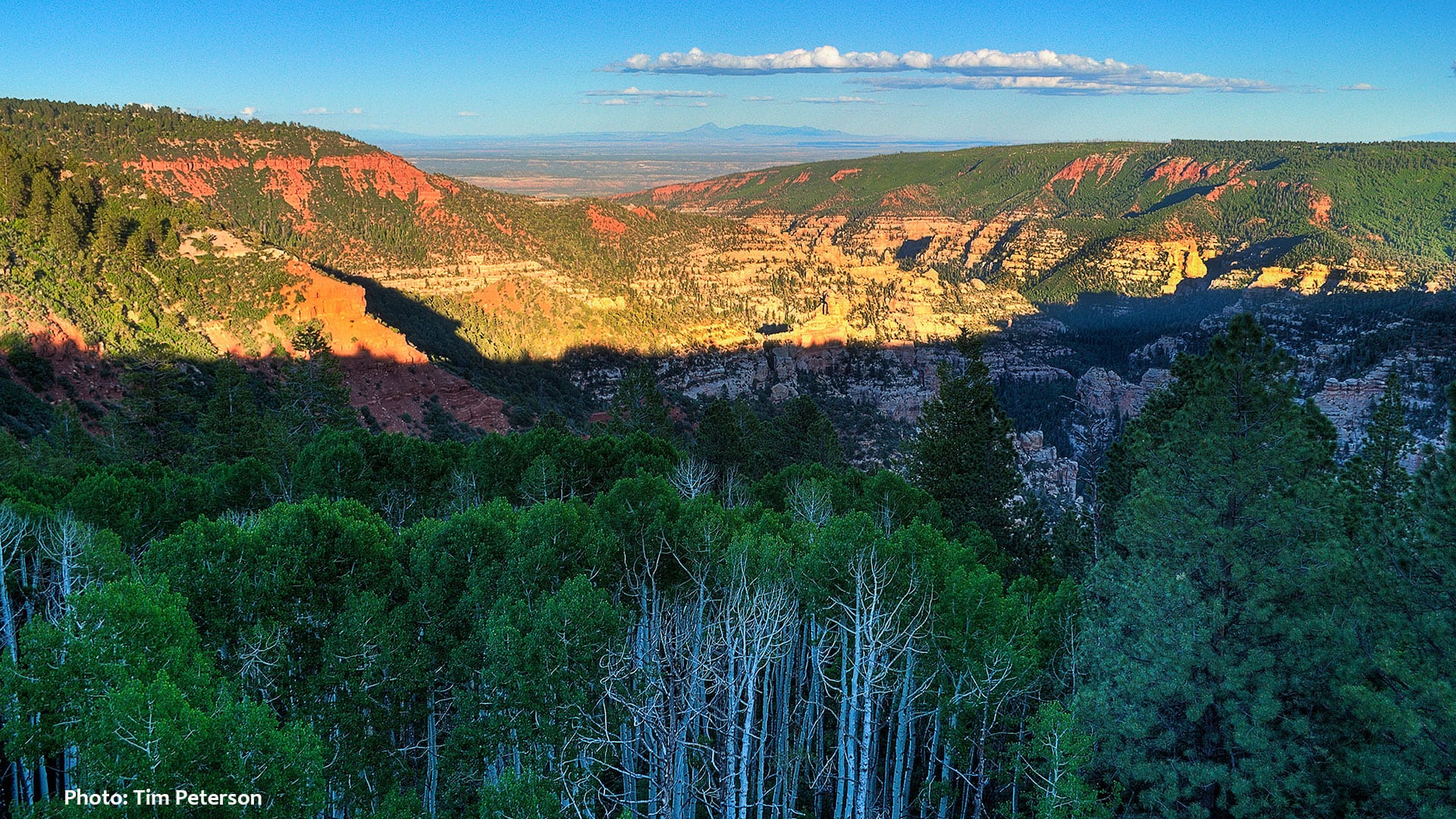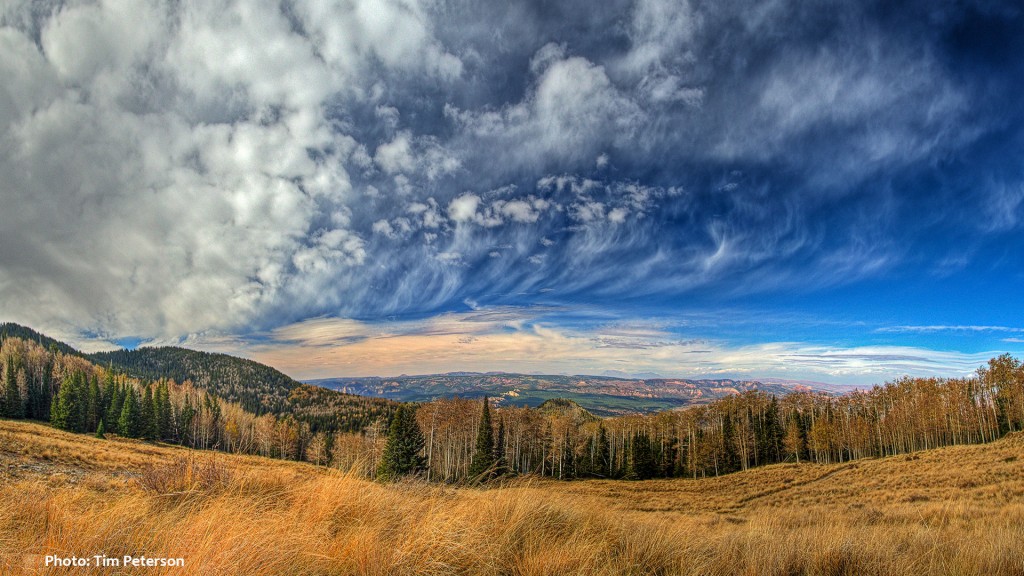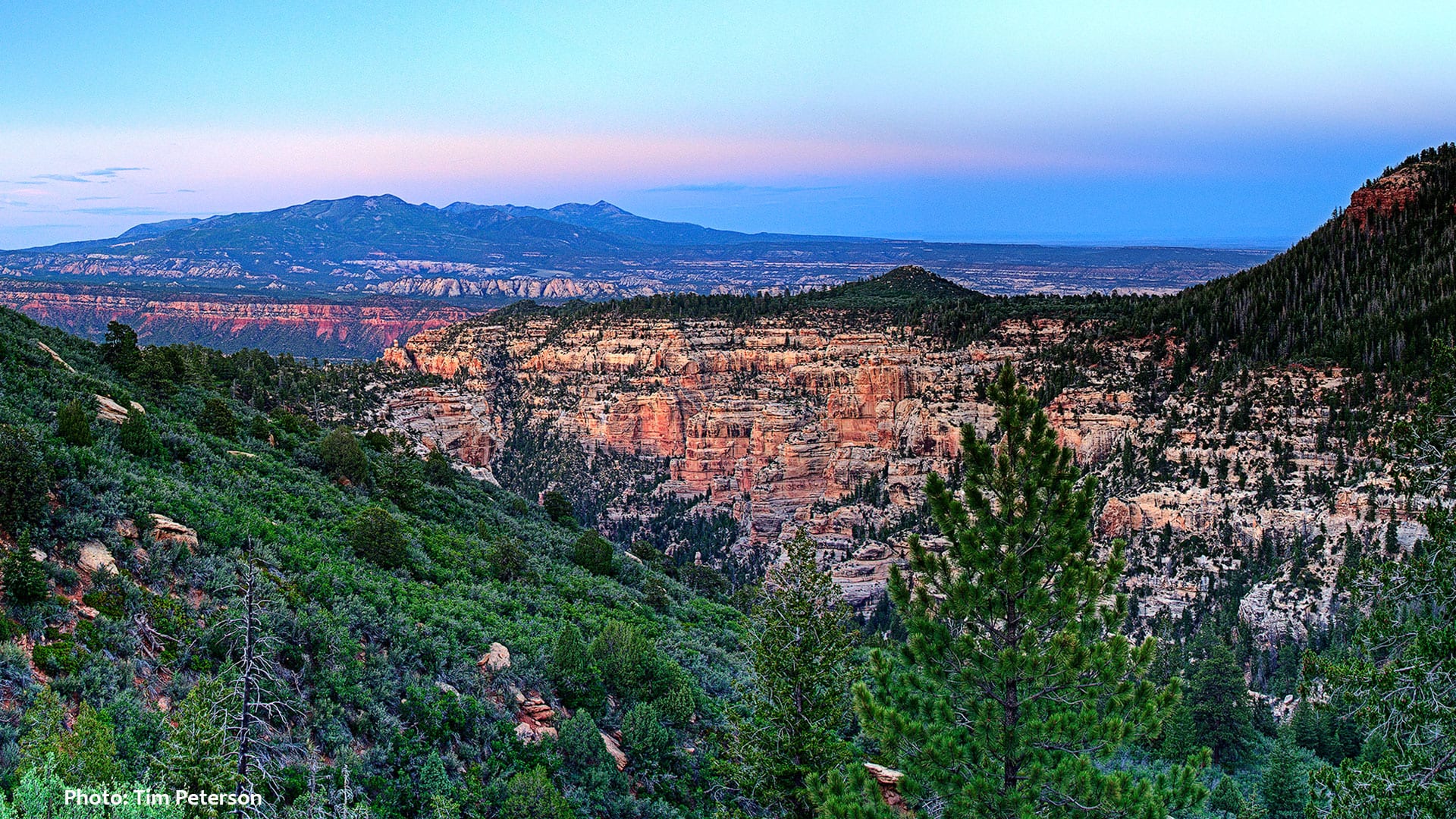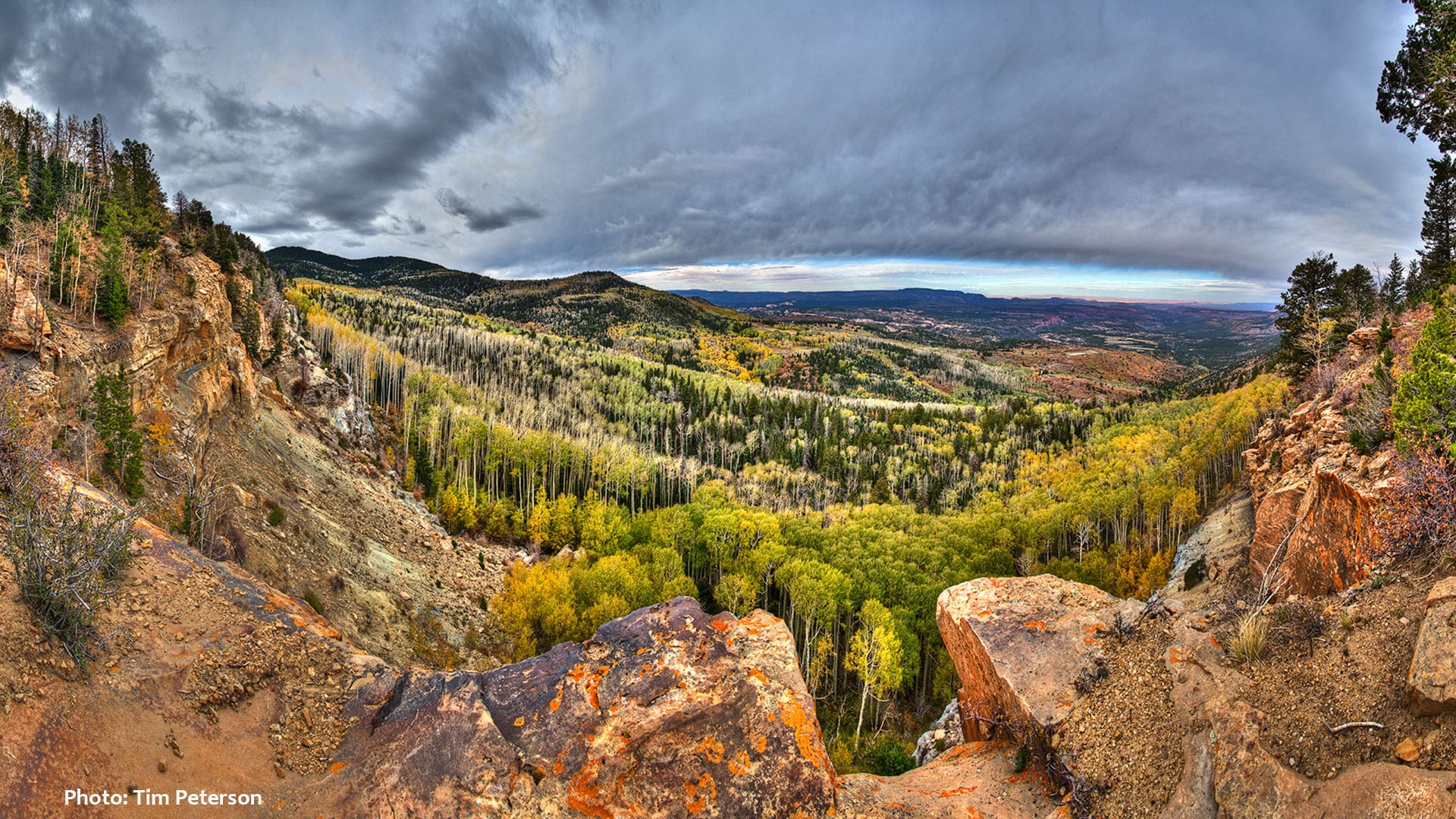ormed 35 million years ago as the Colorado Plateau began to rise, the Sierra Abajo is one of only two volcanic mountain ranges in southeast Utah. Born not as spouting volcanoes, but as laccoliths – magma slipping between the faults in the Plateau’s sandstone layers – the Abajo Mountains and Elk Ridge to the west nearby are some of the most remote National Forest lands left in the contiguous forty-eight states. A testament to their wildness, the last native wolf in Utah was killed in this range in the early 1930s. Today, the area is rich in primitive backcountry recreational activities; including access to southeastern Utah’s only Congressionally designated Wilderness Area in Dark Canyon.
Many places here are strongly reminiscent of Zion National Park in southwest Utah, but this place offers more diversity as the high alpine peaks of the Abajos transition to the ponderosa pine and manzanita plateaus of Elk Ridge, and then tumble down from the colorful buttes and forests of maple, birch, box elder and oak in to sinuous sandstone canyons harboring hanging gardens and spring-fed streams. Rare and endemic species such as Chatterly’s Onion, the Abajo Daisy, Abert’s Squirrel, three-toed woodpeckers, many-lined skink thrive in the area. The Abajo Daisy occurs only on the slopes of the Abajos, and nowhere else on Earth.
The Abajos and Elk Ridge hold large populations of black bear, mountain lion, mule deer, elk and other wildlife – sacred icons of the mesa’s original peoples. The Abajos and Elk Ridge were ancestral hunting grounds for many Native Americans and remain so today. The area is rich with remote Ancestral Puebloan sites, dwellings and rock art, and it remains important to all the tribal peoples of the Colorado Plateau region and Rio Grande Valley today.
Protection for this part of the Bears Ears region would mean a chance to finally complete a crown jewel in our nation’s natural heritage for future generations – to protect an entire watershed from the tops of the lofty peaks at more than 11,300 feet all the way down to the Colorado River in Canyonlands National Park, an unbroken natural tapestry from high lush forests of conifer and aspen to low desert wildflowers with medicinal plants found everywhere in between.

